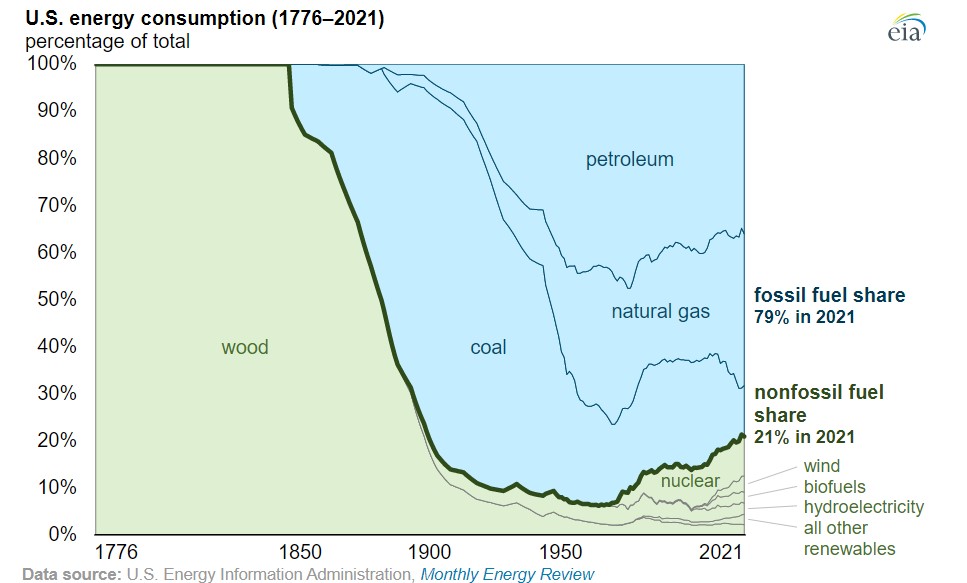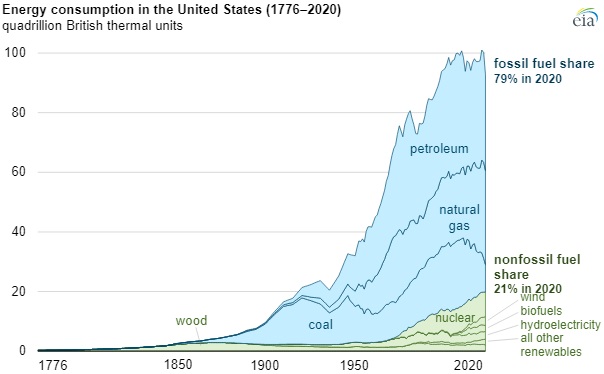American energy consumption since 1776
Happy Fourth of July to all of our readers. Did you know that virtually all of the energy used by Americans until 1850 was renewable?
From 1776 to 1850, wood provided Americans with the energy they needed to cook food and heat their houses. Draft animals, like the ones my grandpa Phil is using in the photo below, did the field work and transported goods to and from their respective destinations.

If you ever watched Little House on the Prairie, you know that life was not a paradise back then. It was nasty, brutish, and short.
In the early decades of the 1800s, Americans began using coal to power the industrialization of the nation. Steam engines at factories and on trains supplemented or replaced wood and animal labor in certain tasks, and the human standard of living increased along with it.

The definition of energy is the ability to do work. Using more energy allowed individual Americans to do more work, allowing each person to be more productive, and creating a larger and larger surplus of goods produced by labor. This is what raises the standard of living.
The graph below shows the same time period but does not adjust energy consumption as a percentage of total use. You can see that the use of coal led to an enormous increase in energy use from the early 1800s through the early 1900s.

The benefits of this increased access to energy are even evident in the skeletal record, as the height of Americans increased as more productive people had access to better nutrition.

The 1900s focused on reliable energy exploration. Coal use continued to grow, oil and natural gas became mainstays for transportation and home heating, replacing coal for this duty because of their superior efficiency for these purposes, large hydroelectric dams were built as part of the New Deal in the 1930s, and nuclear energy, the most modern form of energy, was invented in the late 1950s.
Americans focused on these sources of energy because they were the most reliable, and abundant energy sources available to them. They were able to work on-demand and around the clock, allowing factories to work at all hours of the day.
The 2000s have thus far been characterized as an experiment with unreliable energy sources. While the wind production tax credit was first passed in 1992, it has subsequently been extended several times, leading to massive wind buildouts in the 2000s, 2010s, and 2020s. The story for solar is similar.
However, this flirtation was made possible only because we had a strong, reliable electric grid to provide power on demand, but that grid and our dalliance with unreliable energy sources are coming to a close. Reality is reestablishing itself and reminding Americans that when it comes to politics versus physics, physics is undefeated.